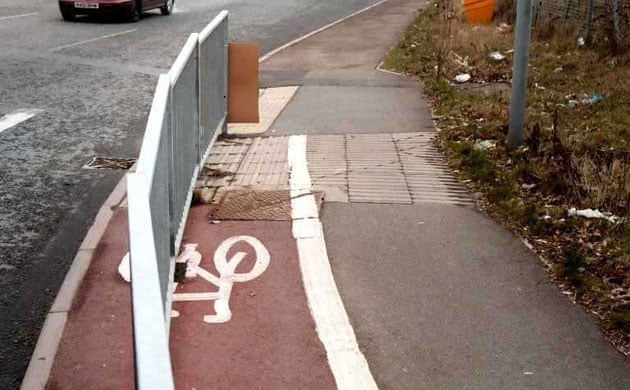What do Amsterdam and Austin have in common?
Well, they both begin with the same letter. And they're capitals: one of a nation, the other of a US State that was once, albeit briefly, a nation and sometimes acts as if it still is one.
Otherwise, I'd guess that they don't share much. Then again, I haven't been to the Dutch city in a while, and I've never been to the center of the Lone Star State.
I have just learned, however, that they do share a trait that most people wouldn't notice, unless they were cyclists. It has to do with bike lanes.
In New York, San Francisco and other American cities, they're painted green. That color was chosen because it stands out against the rest of the pavement and isn't easily confused with, say, a parking or bus lane. While it's great for visibility, it makes a bike lane more expensive to build and maintain because it's a coat of paint over asphalt, which wears away even when it's covered with a clear sealant. Also, the particular shade of green used on bike lanes is more expensive to make than other colors.
And there is another problem: Depending on the paint used, the surface can become slippery in wet weather. That might be one reason why Amsterdam doesn't paint its lanes green--or any other color. Instead, a red pigment is mixed with asphalt to yield a rather lovely terra cota hue.
 |
| Photo from the City of Austin |
I don't know whether Austin's planners were looking to their Dutch counterparts when they designed their city's bike lanes. They did, however, adopt the same system--and color--for the bicycle byways. One reason is the aforementioned cost. But just as rain wears paint away, so does heat--which, from what I understand, Austin experiences for months on end.
While the terra cota shade is not the kind of red used to denote Texas politics, it's still rather ironic that the color is used on bike lanes in one of the state's "blue" islands.





